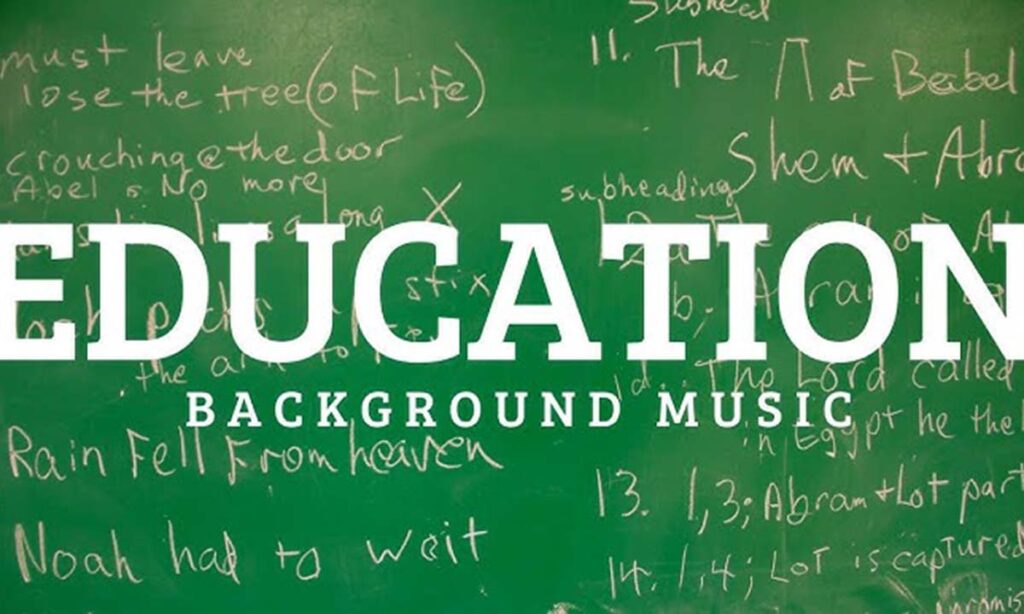Including music as background in educational material can serve as a useful device in helping audiences pay attention and enjoy the content or presentation. The most important thing to keep in mind is that the music would add value to what is being presented instead of serving as a distraction. That’s why we prepared this manual about utilizing BGM in a tutorial or an instructional video the right way.
The Objective of Background Music in teaching in term of video or audio lesson

- Set the Mood: Music can set the mood for your lessons and emotions creates a comfort that facilitates learning. Appropriate BGM is helpful for topics that are often intimidating due to their complexity.
- Engagement: Watching consecutive clips that are well rhythmically constructed makes more and more viewers concentrate best music may also achieve this when interlaced with the video’s rhythm.
- Improving Retention: Evidence suggests that learners are more likely to remember facts when they are set to music. Facts and music together with clear pictures and a story enable the audience to construct meaning on several levels.
Picking the Optimal Background Music
- Narrative Emphasis: It is usually best to choose music that fits a video’s topic and accompanying text. It’s not uncommon to prefer soft, unobtrusive types of music that provide warmth but don’t draw the listener’s attention away from the essential points.
- No Lyrics: BGM with fully developed lyrics may clash with the spoken message and therefore, cannot be recommended. Instrumental background clearly is the best choice since it sets the tone without noise
Check This: The Ultimate Guide to Finding the Perfect Background Music for Your Videos
For Example:
Adjusting Volume and Fading Techniques.
- Set BGM at Low Volume: It is essential that the BGM does not overwhelm the main content of the program. For this reason the music should be set at a low volume, at a level where it can be heard but not dominate.
- Fade Transitions: In each case where music is played, it is either the introduction or conclusion that is the most important, therefore when introducing music this technique should be used, so as to leave an introductory impression that is not too forceful. Fading can also be used when defining the transitions between the parts of the video where a change is needed but no one is talking.
- Dynamic Volume Control: It is important to remember that when there are no words being spoken during an introduction, a break or visual, the volume can be turned up. Most of the time when important ideas are being explained the volume should be low.
How to Avoid the Common Background Music Pitfalls
Rather than use a single track and call it a complex sight, using interest and overbearing sound skeleton can pull viewers’ focus so much that it makes learning a hard task. It is not hard to picture what a simple repeating pattern can achieve.
Matching Music with Content Intensity: The BGM level should always be appropriate to the content at hand. A frustrating idea should not be accompanied by a BGM which is overly busy, as this can create added pressure.
Consistency: Avoid frequently changing tracks when the same video is viewed. Too many changes can interfere with the continuity of the program and cause incongruence. Ideally, use 1 or 2 good background tracks for short videos.
Obtaining and Licensing Background Music
Royalty-Free Music Libraries: Using royalty-free background music libraries such as Epidemic Sound, Artlist, and YouTube Audio Library can protect you from legal issues while providing quality background music.
Open Educational Resources: There are recorded songs intended to be used in educational settings. Be careful about using music that has a limited educational license and always double check that it is for education use only to fail copyright protection.

Must Read:
How to Choose Copyright-Free Music for Social Media Creators
Using Background Music to Elevate Live Streams and Podcasts
Evaluation and Feedback
Audience Feedback: Seek regular permission from the audience about the appropriateness and usefulness of the background music. Such feedback guides you in improving subsequent videos.
Volume and Clarity Tests: Aim to create such tests prior, moderate the volume and listen to the video with a microphone and speaker test how the music works with your narration. It Ensures audio clarity as well as balance across devices.
Final Tips for Effective BGM Use
- Avoid BGM: Although some people can have background music, there are certain cases where there is no need for it. For example, with scientific content, where too much explanation is required, you can leave the BGM off completely.
- Keep It Up: It would not be wise to make a completely new BGM track in every episode of educational videos which are part of a series.
- Help the Viewer: If you have a long pause or a transition into another chapter, temp increasing volume slightly or playing very soft music will help the viewer not feel the abruptness.
Conclusion
When chosen and applied properly, background music can help ease the pressure and make the audience appreciate the sponsored video more. The trick is to never turn BGM up too loud, to become the center of attention. Great teachers combine good music and perfect pacing, so that it feels right even towards the end. By choosing appropriate tracks and actively involving viewers, confounding resources as BGM is possible to incorporate in the chapter.




